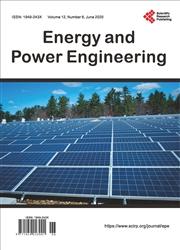Design and Investigation of Energy Harvesting System from Noise
引用次数: 1
Abstract
In order to survive in this modern world, electricity is an essential thing. Electricity allows us to power the technology we use every day. Without electricity, people can’t imagine their lives. As a developing country, Bangladesh still lacks electricity every day. The electricity supply to the rural areas is very poor. It is known that energy can be converted from one form to another form. As noise is the energy, it can also be converted into various forms of energy. Noise can be represented as a sound that is loud or unpleasant and causes disturbances such as street traffic sounds, construction sounds, airports, etc. Using a suitable transducer, noise (sound) energy can be transferred into a viable source of electricity generation. This can be accomplished by employing a transducer and converting noise-induced vibrations into electrical energy. Our main goal is getting enough energy, reducing the pressure of the main grid of electricity and decreasing fossil fuel imports. This paper presents the design and investigation of an energy harvesting system from noise. In this paper, an application is designed to get energy from noise by using a speaker as a transducer. Voltage has been stepped up by using a transformer, a diode which gives DC value which can be tapped into a battery and provide energy from the battery when it is needed. The embedded device was initially tested by clapping hands and tested further by using car horns. The vibrations created by car horns and other noises have been converted into electrical energy through the principle of electromagnetic induction. In total, the application produced optimal results of 0.5 - 1.0 volts which were stepped up using a transformer while maintaining the whole system being low cost and user-friendly.噪声能量收集系统的设计与研究
为了在现代社会生存,电是必不可少的东西。电力为我们每天使用的技术提供动力。没有电,人们无法想象他们的生活。作为一个发展中国家,孟加拉国每天仍然缺电。农村地区的电力供应很差。众所周知,能量可以从一种形式转化为另一种形式。由于噪声是能量,它也可以转化为各种形式的能量。噪音可以表示为一种响亮或令人不愉快的声音,并引起干扰,如街道交通声、建筑声、机场声等。使用合适的换能器,噪声(声音)能量可以转化为可行的发电来源。这可以通过使用换能器并将噪声引起的振动转换为电能来实现。我们的主要目标是获得足够的能源,减少主电网的压力,减少化石燃料的进口。本文介绍了一种噪声能量收集系统的设计与研究。本文设计了一种利用扬声器作为换能器从噪声中获取能量的应用。电压通过使用变压器来提升,变压器是一个二极管,它提供直流值,可以被接接到电池中,并在需要时从电池中提供能量。该嵌入式设备最初通过拍手进行了测试,并通过汽车喇叭进行了进一步测试。汽车喇叭和其他噪音产生的振动通过电磁感应原理转化为电能。总的来说,该应用程序产生了0.5 - 1.0伏的最佳结果,使用变压器升压,同时保持整个系统的低成本和用户友好性。
本文章由计算机程序翻译,如有差异,请以英文原文为准。
求助全文
约1分钟内获得全文
求助全文

 求助内容:
求助内容: 应助结果提醒方式:
应助结果提醒方式:


